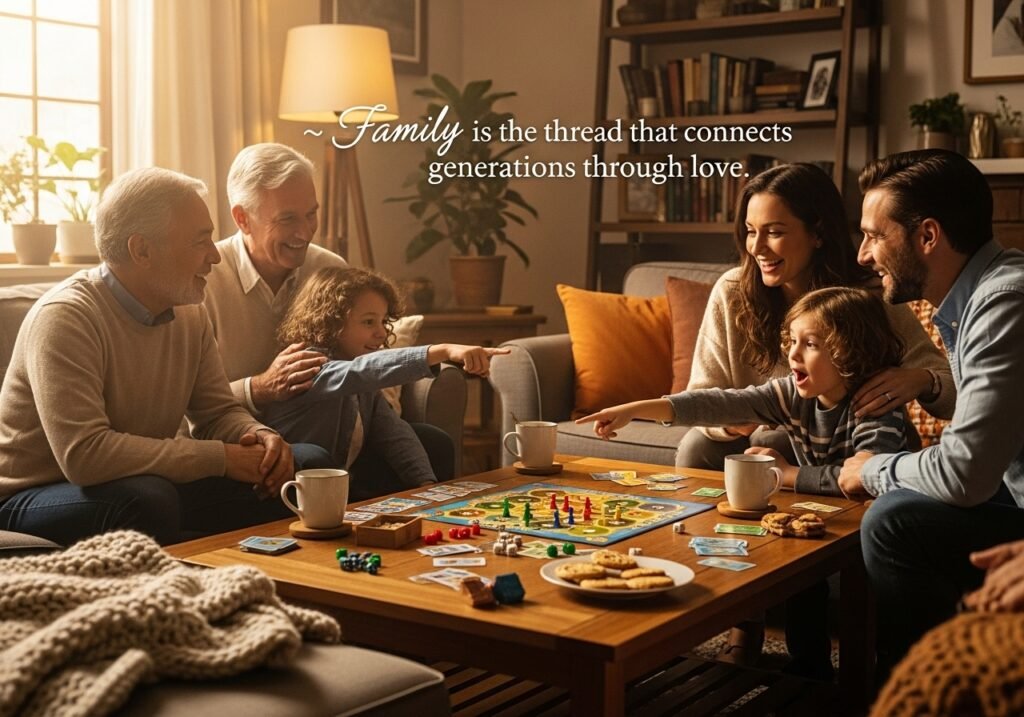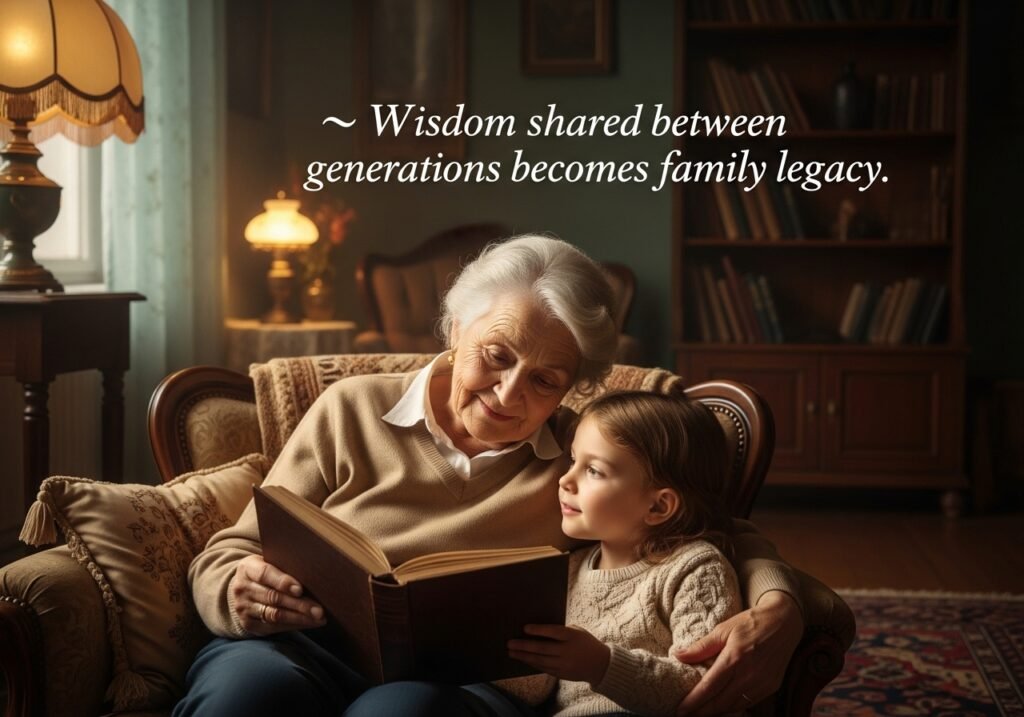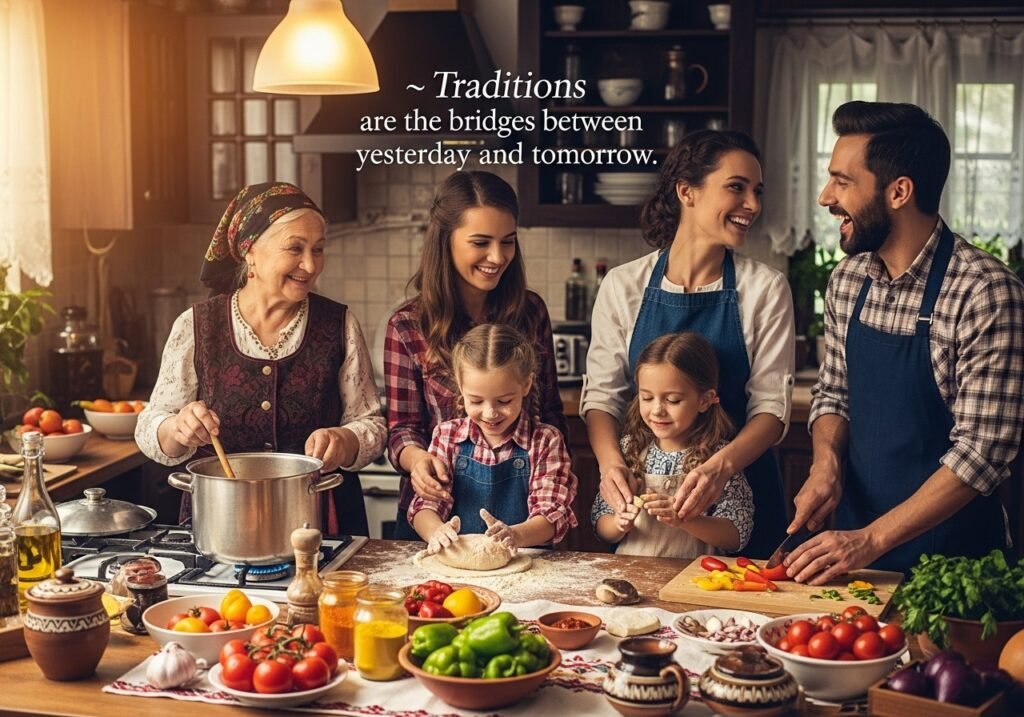Introduction
In today’s fast-paced world, where digital connections often replace real ones, the bond between generations stands as one of the most meaningful human connections we can nurture. Intergenerational family relationships the connection between grandparents, parents, and children form the emotional roots of who we are. These relationships carry stories, wisdom, and love that transcend time. When different generations connect deeply, they create a sense of belonging, continuity, and shared identity that strengthens not only individuals but entire families. In a world that often feels divided by age, technology, or values, intergenerational bonds remind us that love has no expiration date. Let’s explore 5 beautiful ways intergenerational family relationships enrich our lives and why fostering them matters more than ever.
🌿 1. Passing Down Wisdom and Life Lessons
One of the most powerful aspects of intergenerational family relationships is the transfer of knowledge and experience. Grandparents, and even great-grandparents, have lived through changing times wars, cultural shifts, and personal challenges that have taught them resilience. Their stories become guiding lights for younger generations. Listening to tales of how they overcame hardships or built their lives from humble beginnings not only instills gratitude but also offers valuable lessons in patience, perseverance, and hope. In a time when children learn so much from screens, hearing a real story from a family elder creates emotional depth that no digital source can replicate. These shared stories connect the past with the present, grounding younger generations in values and purpose.

🌸 2. Building Emotional Resilience and Belonging
Families that nurture intergenerational bonds create emotionally resilient individuals. When children spend time with older relatives, they experience unconditional love and acceptance beyond the parent-child dynamic. Grandparents often offer a different kind of warmth patient, gentle, and nurturing. This unconditional affection builds self-esteem and emotional security in children. They learn that they are loved for who they are, not for what they achieve. For older adults, the relationship brings vitality and joy. Having young ones around gives them a renewed sense of purpose and belonging. It combats loneliness and keeps their minds active. This two-way exchange of love benefits everyone involved, emotionally and psychologically.

💬 3. Bridging Generational Gaps Through Communication
Every generation grows up in a different world with unique values, technologies, and lifestyles. This sometimes creates misunderstandings or distance within families. However, intergenerational family relationships can bridge these gaps through open, empathetic communication. When grandparents and grandchildren talk about their experiences, they develop mutual respect. The younger generation learns empathy, while the older one feels valued and heard. Conversations about culture, traditions, and personal challenges become bridges that connect two different eras. Even something as simple as teaching a grandparent how to use a smartphone or learning a traditional recipe together becomes an act of shared growth. These small interactions foster mutual learning, laughter, and love that unify generations despite differences in age or worldview.
🌼 4. Preserving Culture, Heritage, and Family Identity
Intergenerational family relationships are the heartbeat of cultural preservation. Through them, traditions, language, and rituals are passed down, keeping a family’s unique identity alive. For example, family recipes, spiritual practices, or simple customs like Sunday dinners or storytelling nights create continuity. They remind younger generations where they come from, nurturing pride and appreciation for their roots. In multicultural societies, these bonds also help children maintain a sense of identity amidst modern influences. Knowing your family history builds confidence and connection it gives you a place in the story of time. Heritage isn’t just about history; it’s about heart. It’s the stories we tell, the songs we sing, and the traditions we carry forward because they remind us of who we are.

🌻 5. Supporting Wellbeing Across Generations
The emotional and even physical benefits of intergenerational family relationships are profound. Studies show that older adults who engage regularly with younger generations experience improved cognitive function, reduced depression, and a stronger sense of purpose. For children and teens, the benefits are equally powerful. Having supportive elders outside of their immediate parents gives them additional emotional anchors. They learn empathy, patience, and compassion through observing and interacting with different age groups. When families share time celebrating milestones, cooking together, or simply talking they cultivate a network of care that supports wellbeing across generations. These interactions promote emotional intelligence, reduce isolation, and strengthen the family as a collective unit.

🌺 The Challenges and How to Overcome Them
Of course, maintaining strong intergenerational relationships isn’t always easy. Differences in opinions, lifestyles, and expectations can cause friction. Younger generations may see elders as outdated, while older ones may feel misunderstood or disrespected. The key is mutual respect and curiosity. Rather than judging each other’s differences, families can use them as opportunities for learning. Younger members can show patience when listening to stories that seem “old-fashioned,” and elders can embrace new ways of thinking without feeling threatened. Creating shared experiences helps bridge these gaps family dinners, storytelling nights, gardening projects, or trips down memory lane. These moments remind everyone that despite generational differences, love and connection remain universal.
🌷 The Modern Importance of Intergenerational Bonds
In modern society, where mobility and technology often separate families, the importance of intergenerational connection has grown dramatically. Many families live in different cities or even countries, making physical togetherness rare. However, digital tools can help maintain emotional closeness. Video calls, shared online photo albums, or even virtual storytelling sessions can keep bonds alive. What matters is intentionality choosing to connect regularly, to share moments, and to express love. These relationships remind us that every generation has something to give. The young bring energy, innovation, and optimism, while the old offer wisdom, patience, and perspective. Together, they form a circle of life where love flows both ways.

🌸 Conclusion
At the heart of every strong family lies connection the kind that transcends time and change. Intergenerational family relationships are living bridges between yesterday’s wisdom and tomorrow’s dreams. They shape who we are by blending the past, present, and future into one continuous story. When we nurture these bonds, we don’t just strengthen families we strengthen society. Love, care, and understanding that flow through generations teach us humanity at its purest form. So, whether it’s calling your grandparents, sharing a family meal, or teaching your children about their roots, every small gesture matters. These are the moments that build legacy, belonging, and wellbeing for generations to come. Because in the end, family isn’t defined by time it’s defined by love that never fades. 💖
FAQS
1. Why are intergenerational family relationships important?
Intergenerational family relationships strengthen emotional bonds and create a sense of belonging. They help pass down traditions, wisdom, and values that shape identity and wellbeing. When generations connect, both younger and older members gain emotional support, understanding, and a deeper appreciation for life.
2. How can families build stronger intergenerational bonds?
Families can strengthen intergenerational ties by spending quality time together sharing meals, celebrating traditions, and having open conversations. Encouraging storytelling, mutual learning (like teaching technology to elders or learning culture from them), and regular communication helps bridge generational gaps.